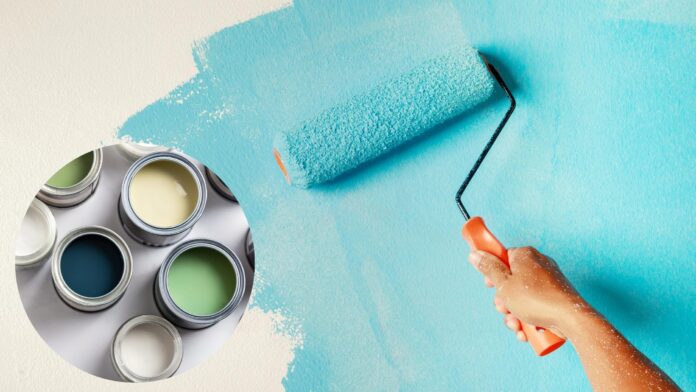Table of Contents
Embarking on a painting project can transform the look and feel of your space, infusing it with new life and energy. However, achieving that perfect finish isn’t just about the color or quality of paint you choose; understanding how long paint takes to Dry and cure is crucial to the success of your project. This guide will dive into the essentials of paint drying and curing times, ensuring your next painting endeavor is flawless.
The Intricacies of Paint Drying Times
When we talk about paint drying, it’s essential to differentiate between the paint being dry to the touch and being ready for a second coat. Initially, the paint will reach a stage where it’s dry to the touch, but that doesn’t mean it’s fully dried through all the layers. Applying a second coat too soon can lead to cosmetic issues down the line, a mistake many enthusiasts make in their eagerness to see the final result.
Different types of paint have varying drying times, influenced by their composition:
- Latex paint typically takes 30 to 60 minutes to dry to the touch, with a second coat advisable after 2 to 4 hours.
- Acrylic paint mirrors latex in drying times, requiring a similar wait before a second application.
- Oil-based paint demands more patience, taking 4 to 6 hours to dry to the touch and around 8 hours before it’s ready for another coat.
How Long Paint Takes to Dry
Drying is just the first phase; the cure time is when the paint fully hardens and achieves its final durability and finish. This process can span days or even weeks, varying significantly based on the paint type used:
- Latex and acrylic paints require a cure time of 14 to 30 days.
- Oil-based paints are a bit quicker, curing fully in around 7 days.
Factors Influencing Paint Drying and Curing
Several external conditions can affect how long paint takes to dry, with temperature, humidity, and ventilation playing pivotal roles:
- Temperature: Cold environments slow drying by thickening the paint and reducing evaporation rates, while hot conditions can cause the surface to dry too fast, leaving a soft layer underneath. For optimal results in varying temperatures, consider using a temperature-adjustable heat gun to control the drying process.
- Humidity: High humidity levels prolong drying times by preventing the water in latex or acrylic paints from evaporating efficiently. To combat this, a dehumidifier can be an effective solution in maintaining an ideal painting environment.
- Ventilation: Proper air circulation is crucial for timely drying. In conditions of low humidity and moderate temperature, opening a window or using a fan can significantly aid this process. For enhanced ventilation, an air mover specifically designed for drying painted surfaces can further optimize drying times.
Painting Technique and Its Impact
How you apply the paint also influences drying and curing times. A thicker application may extend drying times due to the longer evaporation process of the solvent. Conversely, too thin a coat can compromise the paint’s performance and adherence to the surface.
Accelerating the Drying Process: Tips and Tricks
While patience is a virtue in painting, there are ways to expedite the drying process, especially with interior projects. For water-based paints, increasing airflow can significantly speed up drying times. Opening windows and employing a light fan can enhance ventilation, encouraging quicker drying.
FAQs
Q: Can I speed up paint drying?
Yes, increasing airflow and maintaining optimal temperature and humidity levels can help paint dry faster.
Q: How long does oil paint take to dry compared to water-based paints?
Oil paint takes longer to dry to the touch (4-6 hours) and to cure (7 days) compared to water-based paints, which dry to the touch in 30-60 minutes and cure in 14-30 days.
Q: When is it safe to put furniture back after painting?
It’s best to wait until the paint has fully cured, which can take from 7 to 30 days depending on the paint type.
Q: Can I sleep in a freshly painted room?
It’s advisable to wait at least 24 hours before using a freshly painted room to ensure the fumes have dissipated, especially if using oil-based paints.
Conclusion
Understanding how long paint takes to dry and cure is pivotal for any painting project, affecting everything from the work’s timeline to the finish’s quality. By considering the type of paint, environmental conditions, and application techniques, you can ensure your painting project is both successful and satisfying. Remember, the key to a perfect paint job lies not just in the color or technique but in the patience and knowledge of the drying and curing processes.



